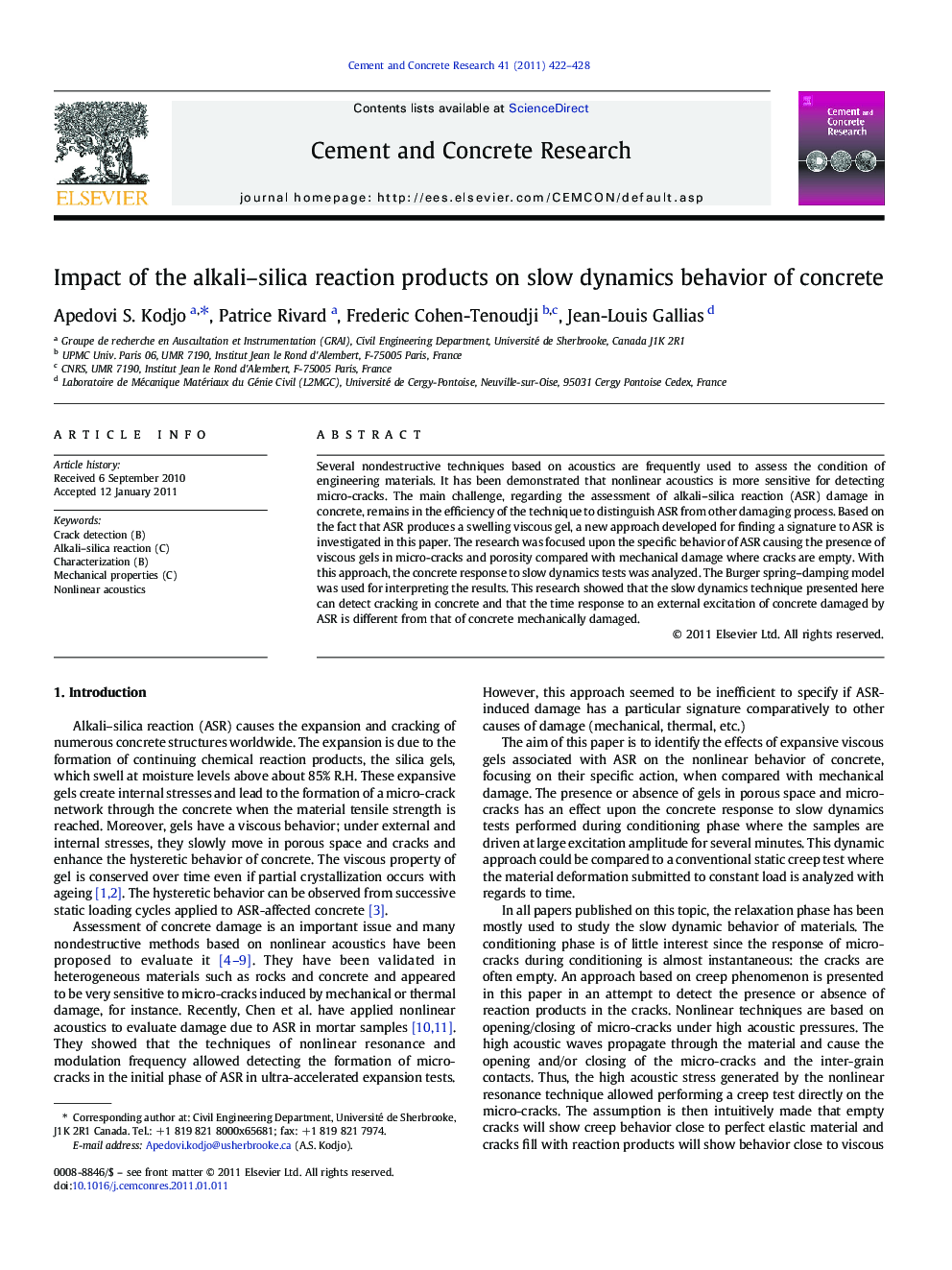| Article ID | Journal | Published Year | Pages | File Type |
|---|---|---|---|---|
| 1456922 | Cement and Concrete Research | 2011 | 7 Pages |
Several nondestructive techniques based on acoustics are frequently used to assess the condition of engineering materials. It has been demonstrated that nonlinear acoustics is more sensitive for detecting micro-cracks. The main challenge, regarding the assessment of alkali–silica reaction (ASR) damage in concrete, remains in the efficiency of the technique to distinguish ASR from other damaging process. Based on the fact that ASR produces a swelling viscous gel, a new approach developed for finding a signature to ASR is investigated in this paper. The research was focused upon the specific behavior of ASR causing the presence of viscous gels in micro-cracks and porosity compared with mechanical damage where cracks are empty. With this approach, the concrete response to slow dynamics tests was analyzed. The Burger spring–damping model was used for interpreting the results. This research showed that the slow dynamics technique presented here can detect cracking in concrete and that the time response to an external excitation of concrete damaged by ASR is different from that of concrete mechanically damaged.
